
One year ago today, Google unleashed Stadia, their ambitious game streaming platform, onto the world. In the time since then, my gaming has been done almost entirely through Stadia alone. Over the course of 2020, Google Stadia has grown in many ways, stagnated in some others, but a special something about it has always shined through.
Before commenting on the playability of Stadia, I feel obligated to note that I have one of the better scenarios for Stadia to work and work well. My home internet has been 100Mbps (later upgraded to 1000Mbps/1Gbps) fiber service connected to a Nest Wifi mesh system, with that router’s Stadia optimization enabled. My Chromecast Ultra is even connected directly via Ethernet. While the nearest Google data center may be hundreds of miles away — meaning higher ping and input lag — everything else in my home setup was effectively optimized for Stadia.
With that in mind, know that your mileage may vary. No one else’s experiences with Stadia will line up exactly with how it will work for you. The only way to know for sure is to try Stadia for yourself.
Playability
One of the first things we felt compelled to share about Google Stadia, in the first days after its launch, was that it just plain works. One year later, that feeling still rings fairly true; Stadia feels less like “game streaming” and more like “gaming.” It’s genuinely easy to forget that you’re streaming at all, particularly when playing on a TV with Chromecast Ultra, but Android and web are also surprisingly good.
The most important aspect of Stadia feeling natural is having minimal input lag. Generally speaking, the best way to do this is to use the official Stadia Controller over WiFi, as it skips a few steps to connect “directly” to Google’s servers. Connecting a controller through USB is also usually a good experience, though if your device’s connection becomes unstable, so too will your controls. Using a Bluetooth controller can be distinctly worse, sometimes adding a noticeable amount of input lag, but still being mostly playable.
As for the games themselves, almost every game I’ve played on Stadia — Watch Dogs: Legion and a few other newer Ubisoft titles being notable exceptions — has run at a smooth 60 frames per second (fps) while set to 720p or 1080p resolution.
Stadia feels less like “game streaming” and more like “gaming.”
However, running at 4K is a bit messier, for a variety of reasons. The constant ~35mbps demand of 4K can overwhelm some devices and networks, leading to stutters. Beyond that, some games don’t support 4K at all, and some of those that do — such as Borderlands 3 — will drop down to 30fps to compensate. Generally speaking, I don’t find Stadia’s 4K streaming capabilities to be worth the added potential hassle, and instead, I mostly stick to 1080p/720p.
Overall, when everything is working well, Stadia continues to impress me and feel futuristic, even to this day. That said, despite my excellent network setup, Stadia does not always work well.
There are sometimes periods where I will experience intermittent stutters on the Chromecast Ultra that can only be fixed by dropping down to streaming in 720p. While this isn’t necessarily the end of the world, you need to use a “trick” to restart the stream — use the “Stop casting” button in the Google Home app, then cast again from the Stadia app — in order to switch resolutions without fully restarting your game. Simply choosing to “Exit game” will, exactly as it says, exit the game on the server side.
During one particularly memorable weekend, Stadia’s overlay menu on Chromecast — used to manage settings like stream resolution, view your friends list, and start/join a party — refused to open altogether.
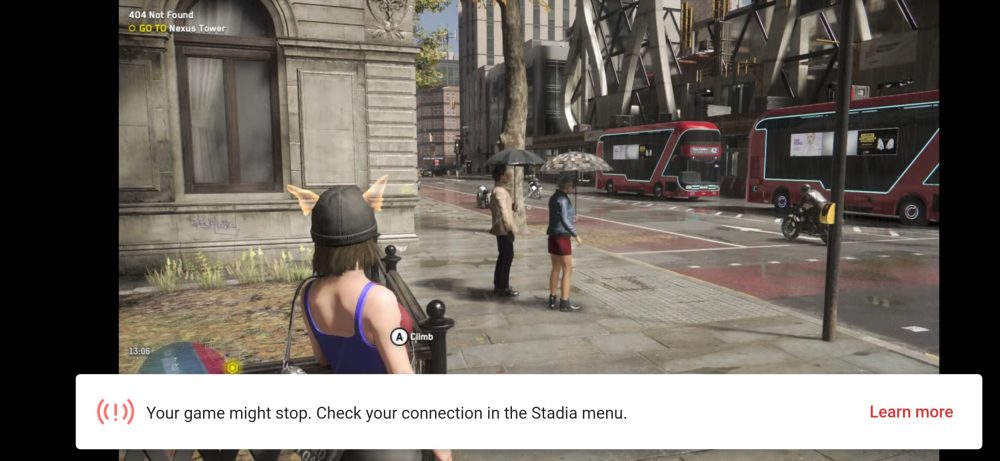
Occasionally, particularly when playing games from my Chromebook, Stadia will simply load to a black screen. Sometimes this goes away after the first restart, other times it takes a couple of tries. Over the last few months, thankfully, this issue has steadily declined in frequency.
While all of these issues may seem damning as a collective, they do not surmount the joy that I’ve found in playing games on Stadia for the past year, nor do they reflect everyone’s experience. Yes, issues happen, but once you get into “the zone,” it all fades into the background.
Features
When Google gave their initial public presentation at GDC 2019, Stadia seemed like it could be a truly revolutionary platform, bringing features that are truly only possible in the cloud, as well as deep integration with YouTube and the Google Assistant. Streamers would be able to interact with their viewers in new and exciting ways. YouTubers would be able to share links for fans to recreate moments from their videos. The Google Assistant would be able to show you a clip of how best to overcome a challenge in a game.
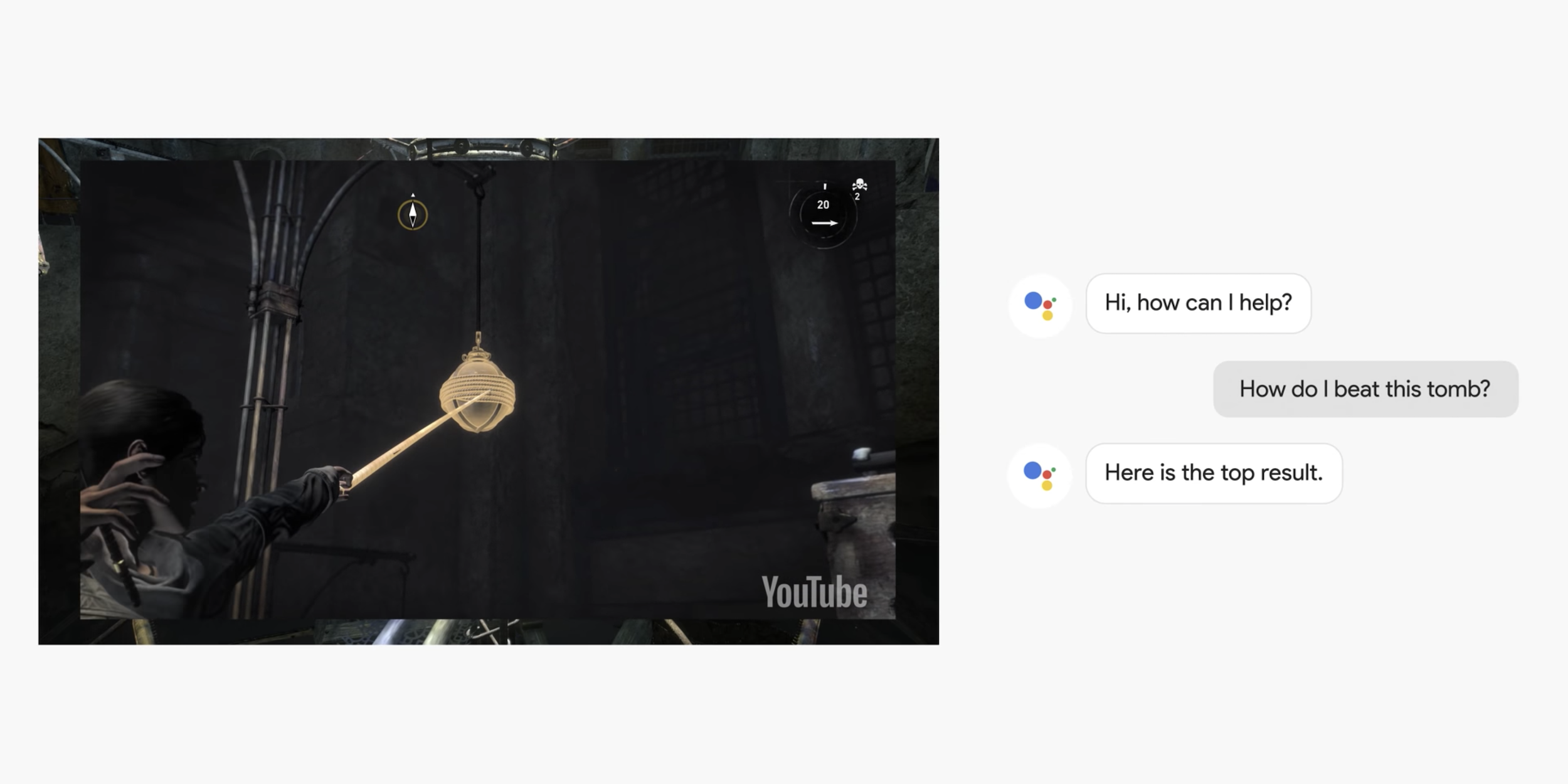
What we got in November 2019 had precisely none of those things.
Instead, Stadia was a no-frills platform for playing games from a web browser, phone, or streaming stick. Make no mistake, that was — and in many ways still is — an impressive achievement, but it wasn’t the gaming revolution some thought they were promised.
Worse, Stadia was a mess, with three distinct apps that had no consistency between them. Web browsers couldn’t stream in 4K, the Stadia controller couldn’t connect wirelessly to the Android or web apps, the store was only available from mobile, the list goes on.
Over the course of the last year, Google has shaped Stadia’s clients on Android, web, and Chromecast into near equals. Barring the still strange inability to use voice chat or parties on Android, almost every Stadia game now looks good and feels good to play on every device. The only real exceptions are related to controls, as games like Baldur’s Gate 3 and the creator mode of Crayta are arguably best played on a computer with a keyboard and mouse, not a controller.
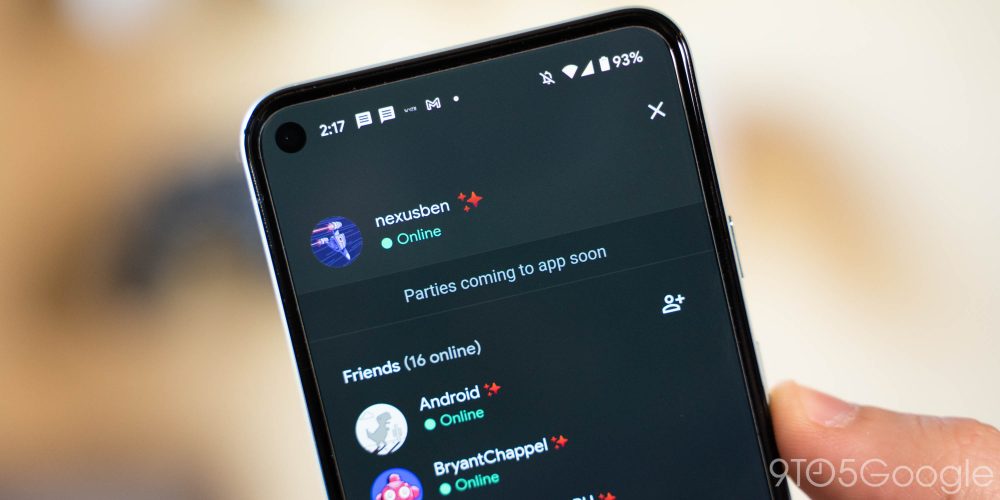
Alongside a drive for consistency, Stadia has gained some of its long-promised exclusive features:
- Stream Connect can embed other players’ streams into your own as a sort of picture-in-picture mode great for team coordination in games like The Division 2 and Orcs Must Die! 3.
- State Share creates web links to a specific place within a game and is used by Crayta to create links that let a player jump straight into a particular mini-game or lobby.
- Crowd Play adds a queue feature to YouTube Gaming, where viewers of a stream can request to join their favorite streamer for a game.
- Crowd Choice allows streamers to give their viewers direct control over certain aspects of the game through polls run via YouTube.
As cool as some of these sound, all of these Stadia exclusive features need to be manually integrated into each game, which means they’re currently only available in a small handful of titles. I can genuinely count on one hand the number of times I’ve used any of them in the last year, making them essentially meaningless to the overall conversation.
You can think of these like the Soli sensor in the Pixel 4. Yes, the tech is impressive, but if developers aren’t doing anything with that tech, it all feels like a waste.
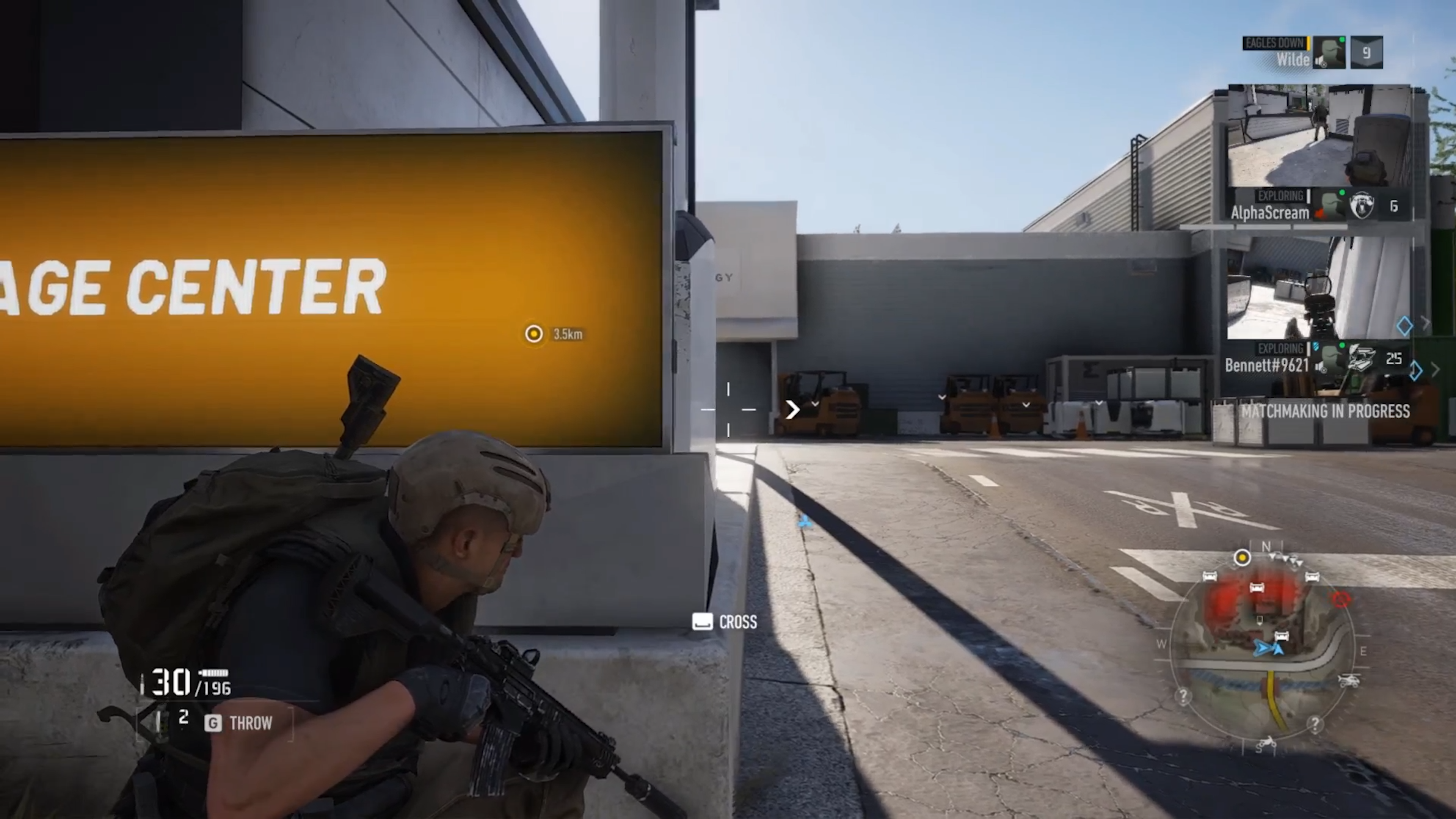
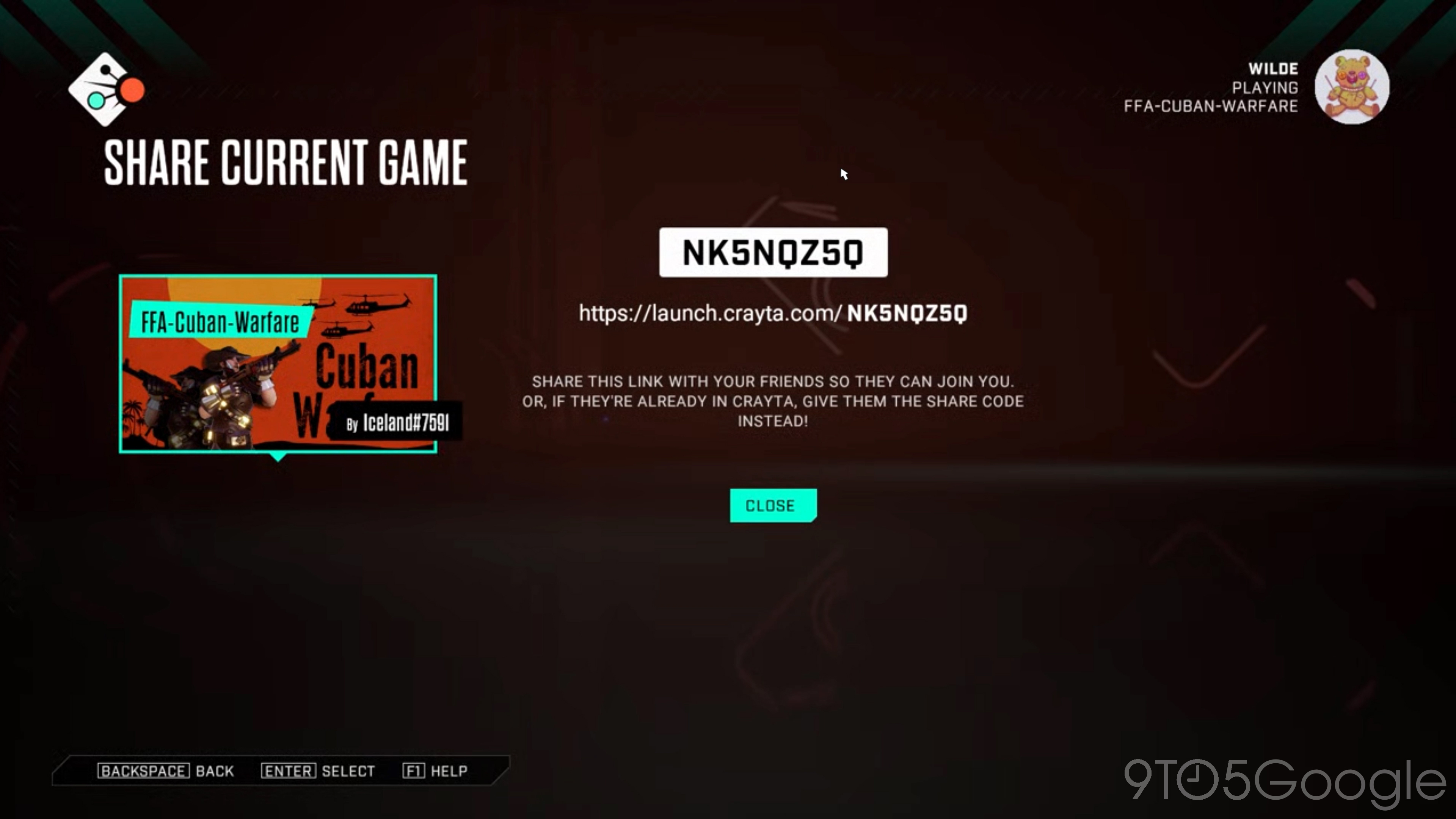
This is especially true when it feels like other more seemingly useful or even critical features have fallen by the wayside. It took just shy of a year for Stadia to launch some core features of nearly every other gaming platform in existence such as family sharing and messaging, the latter of which launched just this week.
Even focusing on just the “futuristic” features, Google’s priorities for Stadia seem out of whack. At GDC 2019, Google outlined the ability to stream Stadia games directly to YouTube without needing to run streaming software like OBS on your device. This seemed like a genuinely revolutionary feature, but a year later it’s little more than a greyed out “Coming soon” in a menu.
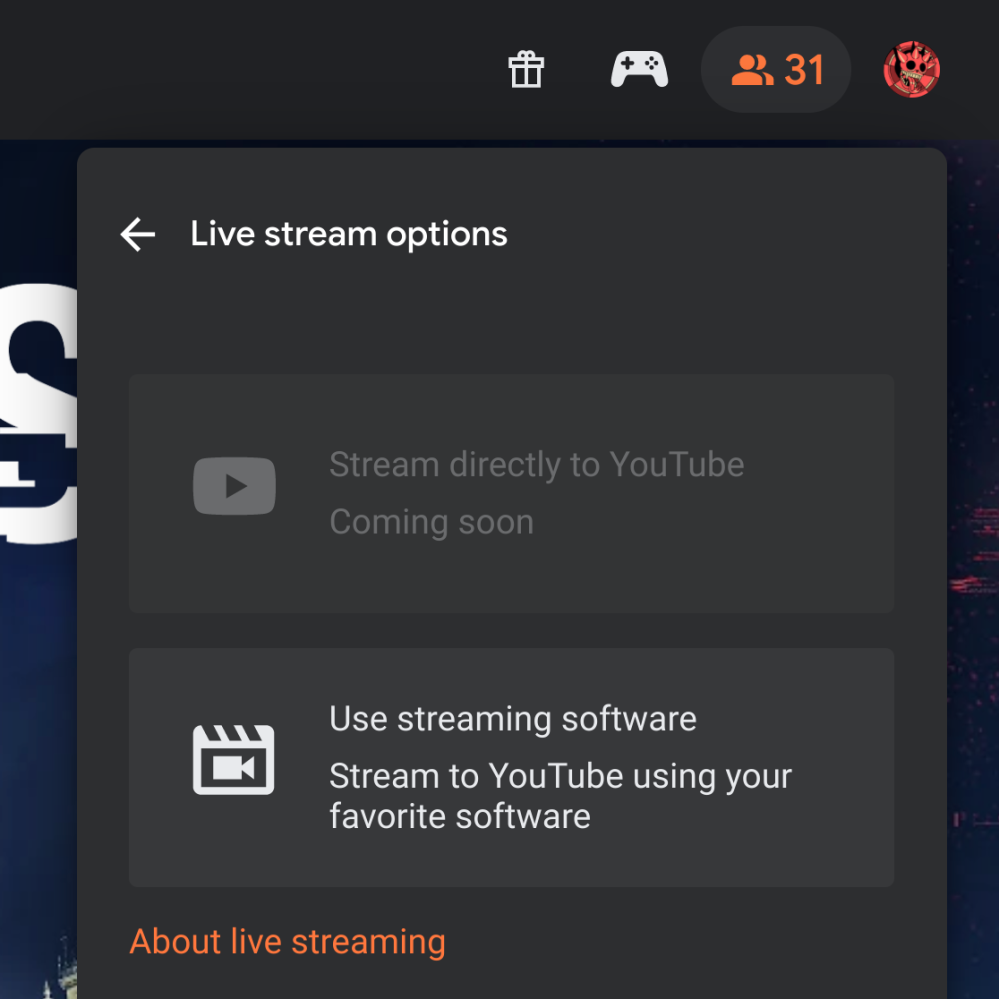
By far, however, the most egregious omission is that somehow Google — the search company — has not added search to Stadia’s store. The current best way to find a game in the Stadia store, if it’s not a new release, is to open the Store tab, find and open the “All games” section, and scroll through. When Stadia only had about 20 games, this was manageable at best, but now that Stadia has over 100 titles, it’s infuriating and baffling as the game library grows.
All in all, feature-wise, Stadia is currently a mishmash of good-enough functionality, “Coming soon” notices that read more like “To-Dos,” and the odd glimpse into the future. It surely won’t always be this way, but it’s clear that Google doesn’t plan to fix it all overnight. Compared to consoles that are essentially feature-complete out of the box, Stadia’s gradual development of features and quality-of-life improvements can feel grueling.
Games (or a lack thereof)
As I’ve mentioned, Stadia has been quite nearly my sole platform for gaming since its launch, with a few key exceptions. With one look at Metacritic’s list of the top 100 games of 2020 so far, it’s easy to see why exceptions needed to be made. While the list contains duplicates for when a game releases on multiple platforms, it’s still admittedly depressing to see that only five games of those top 100 releases are currently available on Stadia — F1 2020, Doom Eternal, Risk of Rain 2, Assassin’s Creed Valhalla, and Spiritfarer.
Even setting aside platform exclusives like The Last of Us Part II and Animal Crossing: New Horizons, to experience 2020’s gaming cultural phenomena like Hades and Fall Guys (which is admittedly not in that top 100), you have to be willing to play on more than just Stadia. And arguably, that’s fine! Stadia isn’t trying to be the only console in a gamer’s life, just the most accessible one. Regardless, it’s hard not to feel that Google could be doing far more to woo relevant developers toward making games for Stadia.
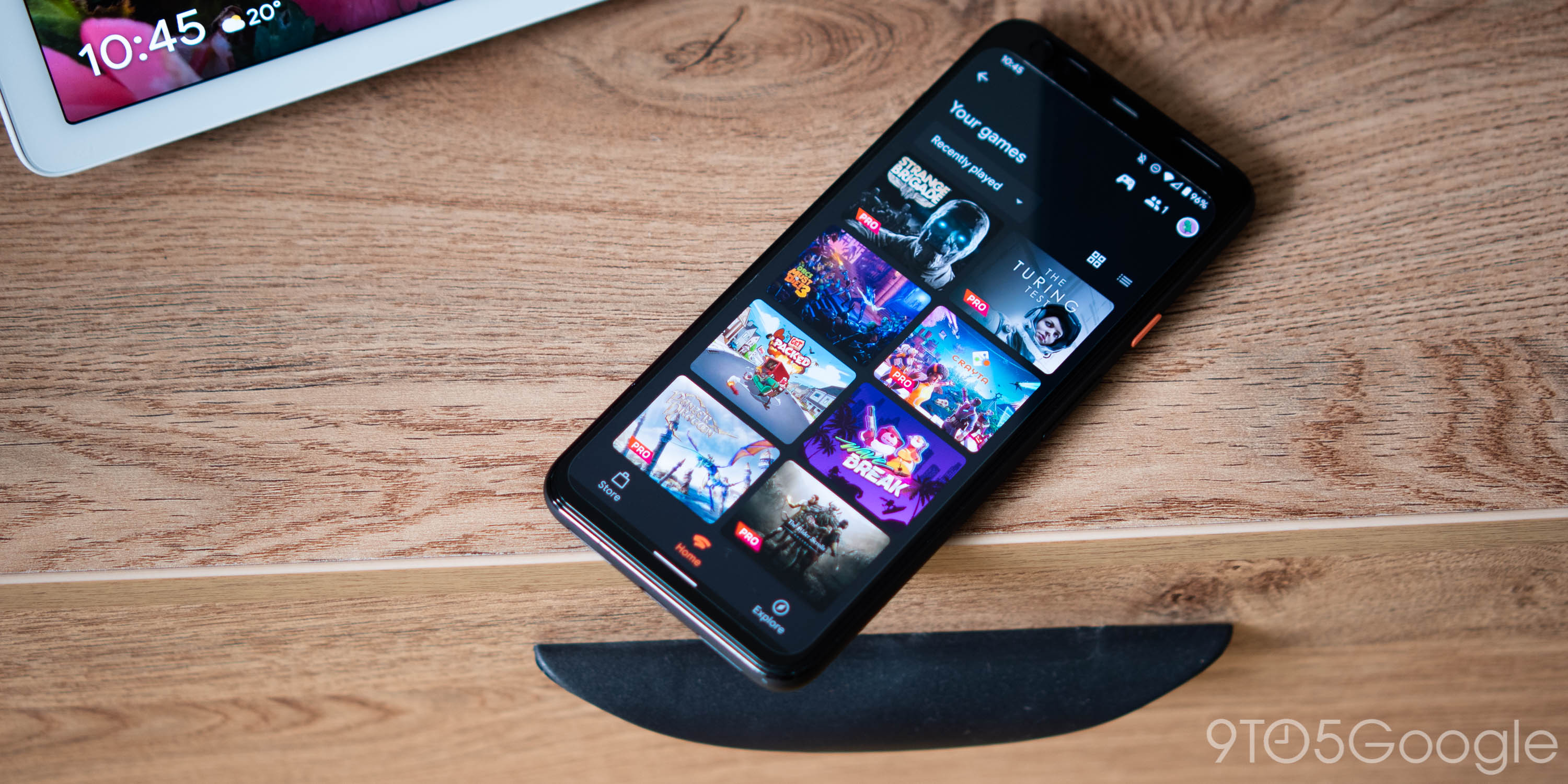
But let’s focus on what Stadia has offered. Over the course of late 2019 to today, Stadia has primarily been catching up on releases of years or months past. In fact, of the 107 games that have been released for Stadia so far, only 31 arrived on Stadia on that game’s initial release date, and of those, 11 were Stadia-exclusive games.
Again, this is all more or less fine, especially when you consider the real target audiences of Stadia. While Google may have spent most of the first year of Stadia’s life trying to market to “hardcore” gamers, Stadia makes much more sense for two groups of people:
The first are the folks who used to play a lot of video games when they were younger, but, as life’s responsibilities piled up, later found it hard to make time to play games. For this group, cloud gaming has the appeal of not needing to download, update, or even store their games which removes three huge potential time barriers. Over the past few years, I’ve personally drifted into this category of gamer.
Stadia isn’t trying to be the only console in a gamer’s life, just the most accessible one.
Then there are the people who have never really played video games, or at least never got deeply into the hobby. Rather than needing to buy any sort of gaming hardware upfront — even a used PlayStation 4 is $280 — first-time gamers can enjoy Stadia with whatever tech they already have and only pay for the games themselves. This is arguably the smaller of the two groups right now, especially as Microsoft pushes to make its Xbox hardware much more affordable, but this is an audience that absolutely exists and one that Stadia is a good solution for.
For both of these groups, a Stadia re-release is an opportunity to play a game they probably never would have otherwise. Developers like Square Enix and Ubisoft have even begun to lean in to these audiences, bringing the back catalog of their biggest franchises — Tomb Raider, Assassin’s Creed, Hitman, etc — to Stadia so that players can enjoy more of the series. Google has also been appealing to the developers of some of the best indie games in recent years, to develop Stadia ports of games like Celeste and Hotline Miami.
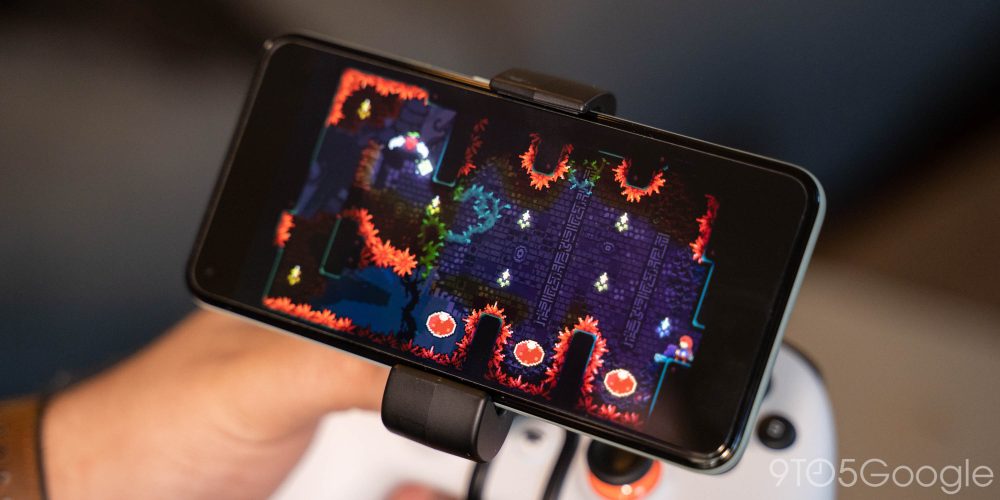

Beyond that, Stadia’s library has more than a few games that can honestly be the only game you need — games like Destiny 2, The Division 2, and Elder Scrolls Online. For this type of one-and-done gamer, Stadia’s business model of “just buy the game and play it” may make more sense financially in the long run.
Over the years, though, the one thing that typically makes or breaks a particular game console is its set of exclusive titles. For nearly 20 years, the Halo franchise alone has sold an untold number of Xboxes across three, and soon four, console generations. For the PlayStation 5, Sony has unveiled a massive trove of upcoming exclusive games, selling players on the future of the console.
In its first year of existence, Stadia has only had about a dozen “exclusive” games, almost all of which are only timed exclusives. While we’ve certainly enjoyed many of these — Lost Words and Get Packed spring to mind — for the fun experiences that they were, Stadia has yet to have its “Halo moment.” The closest we’ve gotten is Orcs Must Die! 3, a solid tower-defense game with fantastic co-op play that most people would probably like and is only available on Stadia.
Google is, of course, actively working to address this through partnerships between their Stadia Games & Entertainment division and companies like Harmonix and Splash Damage to create true exclusives like Outcasters. In the meantime, Stadia does not have any exclusives that are compelling enough on their own to convince players to use the platform.
Community & player base
I cannot write this review without taking a moment to give a shout-out to the Stadia community. Every single person I’ve played with or chatted with has made Stadia a fantastic experience. In the past year, I’ve not encountered a single salty or toxic player. Perhaps that’s simply a matter of luck and the fact that Stadia doesn’t have messaging yet, but it feels like an accomplishment worth celebrating as it’s certainly not true of my experience on other platforms.
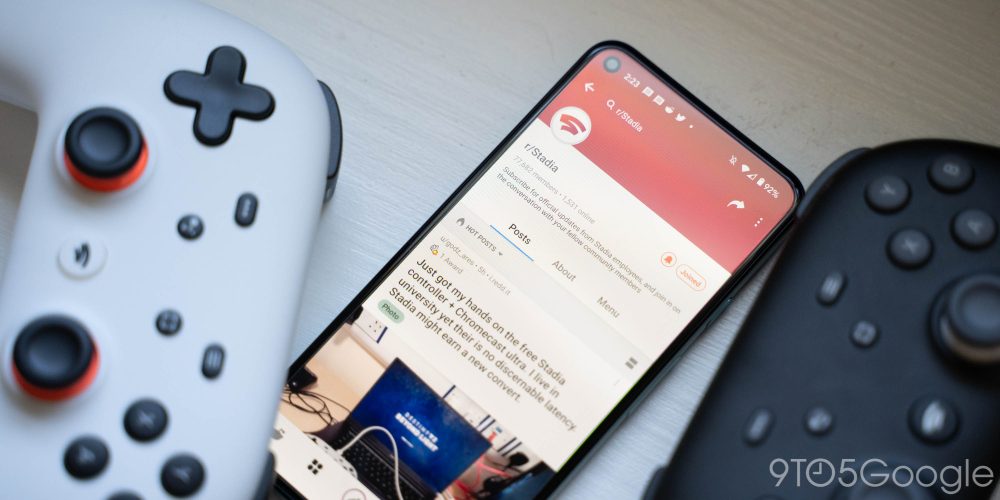
The most passionate of those players have quickly become streamers, podcasters, video creators, bloggers, and more, building a fledgling and tight-knit community for Stadia. One thing I’d really like to see is for Google to surface this Stadia community content to more players, such as on the Explore tab in the app, which currently only features a boring smattering of official links that haven’t changed at all in the past year.
Unfortunately, the flip side of this small community is that multiplayer games can be very frustrating. People often exaggeratingly joke about Stadia only having eight players, but sometimes it doesn’t feel far from the truth.
In games like Destiny 2 — admittedly my most played Stadia game by a significant margin — all but the most popular modes are nearly impossible to matchmake for, especially in a fair way. Some games — PUBG and Super Bomberman R Online, for example — will try to compensate by replacing the unfilled player slots with bots, making for a debatably worse experience.
Considering the obvious player base hurdles, it’s incredible to think that more than one developer thought it wise to release a 64-player battle royale game exclusively on Stadia, meaning no opportunities for cross-play. For both Super Bomberman R Online and Pac-Man Mega Tunnel Battle, instead of being smart investments on Google’s part to try and pull in potential players, they’ve become the latest anecdotes to make jokes about Stadia’s “eight players.”
Until such a time as Stadia manages to pull in a massive player base on its own, multiplayer games on Stadia almost need to offer cross-play to be worth playing. Some games like The Division 2 already offer cross-play with PC, opening Stadia to a larger world of players, but it’s up to each individual developer to add cross-play.
None of this is a surprise for a platform that has only been freely accessible to the public for seven months — free signups opened in April — but it still feels bad in general.
Value in a now-crowded field
Next, we need to talk about Stadia’s value and the way players are expected to pay. Critics frequently panned Stadia for not being the holy grail of “Netflix for games,” and since Stadia’s launch two separate services have launched that really are a Netflix for games.
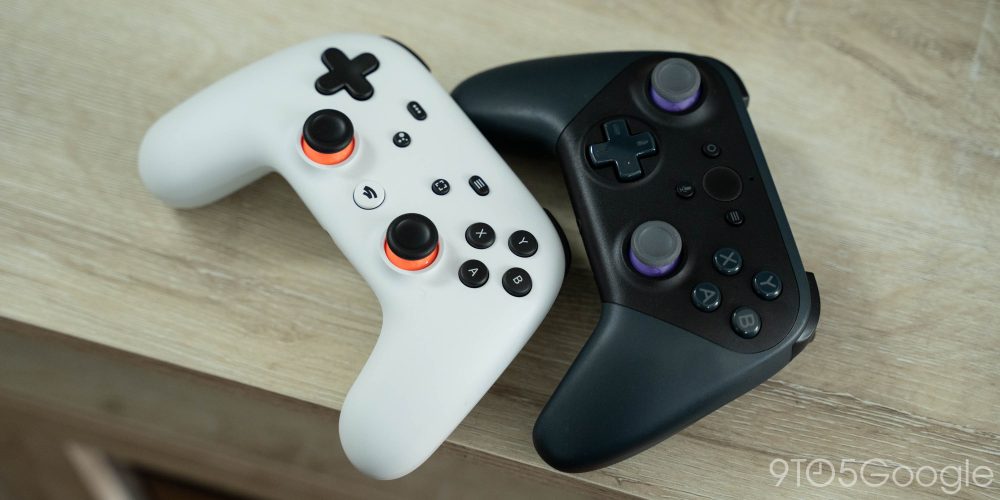
Microsoft’s Game Pass Ultimate — which also includes access to downloading games on Xbox and PC — is $15 per month for over 150 Xbox One games streamable at 720p. Meanwhile, the recently launched Amazon Luna offers a little over 50 games for an early access price of $5.99 per month, set to increase when Luna is released publicly.
Using games per dollar as the sole benchmark, Stadia Pro may seem like a terrible value compared to these two, currently offering about 30 games to newly subscribed Pro members at $9.99 per month. However, what sets Stadia Pro apart is that — just like Xbox’s Games with Gold and Sony’s PlayStation Plus games — games you claim with Stadia Pro are yours so long as you’re a member, even if you unsubscribe and resubscribe later.
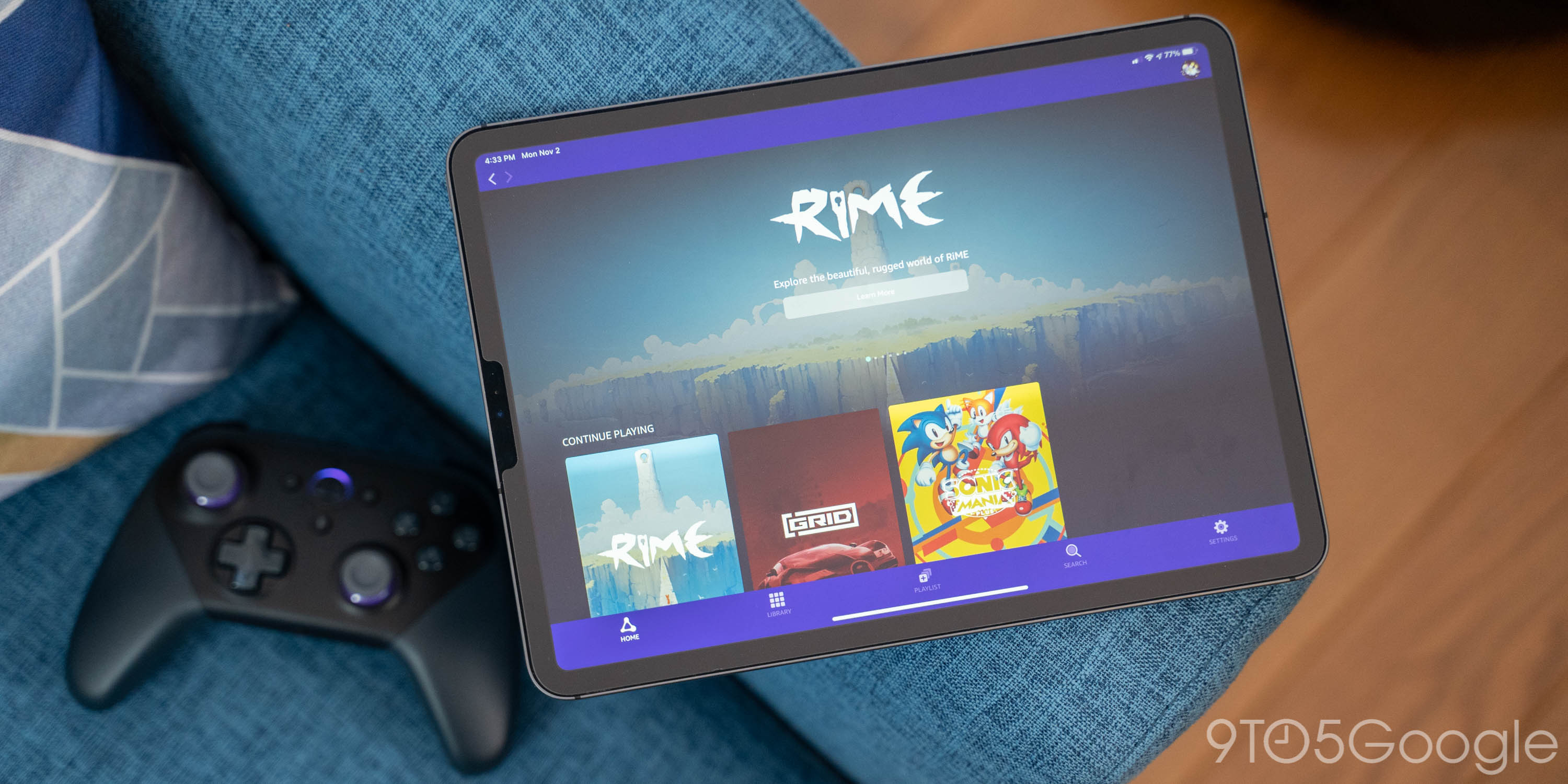
So, while yes, Stadia has only offered about 50 games to their Pro members — roughly 48% of the whole library — over the course of the past year, there’s little to no chance of any of these games ever leaving the service, a guarantee that Game Pass and Luna do not make. Instead, Stadia is best thought about as a free console that’s bundled with your Google account. All you need to do is buy the games you want to play, and you’re set.
Of course, Game Pass and Luna aren’t the only competitors in the market. You’ve also got Nvidia GeForce Now and Shadow, both of which simply offer streaming access to a high-end Windows PC, allowing you to play games you’ve purchased on services like Steam, Epic Games Store, and more.
While cheaper, GeForce Now has a limit to how many people can play simultaneously — a limit which is frequently reached, putting other players into a queue — and the free tier only allows you to play for an hour at a time. Even the $4.99 per month paid tier only allows sessions of up to six hours. Meanwhile, Shadow, for $11.99 and up, (normally) doesn’t have a queue or time limits, but you’ll need to manage things like Windows Updates yourself.
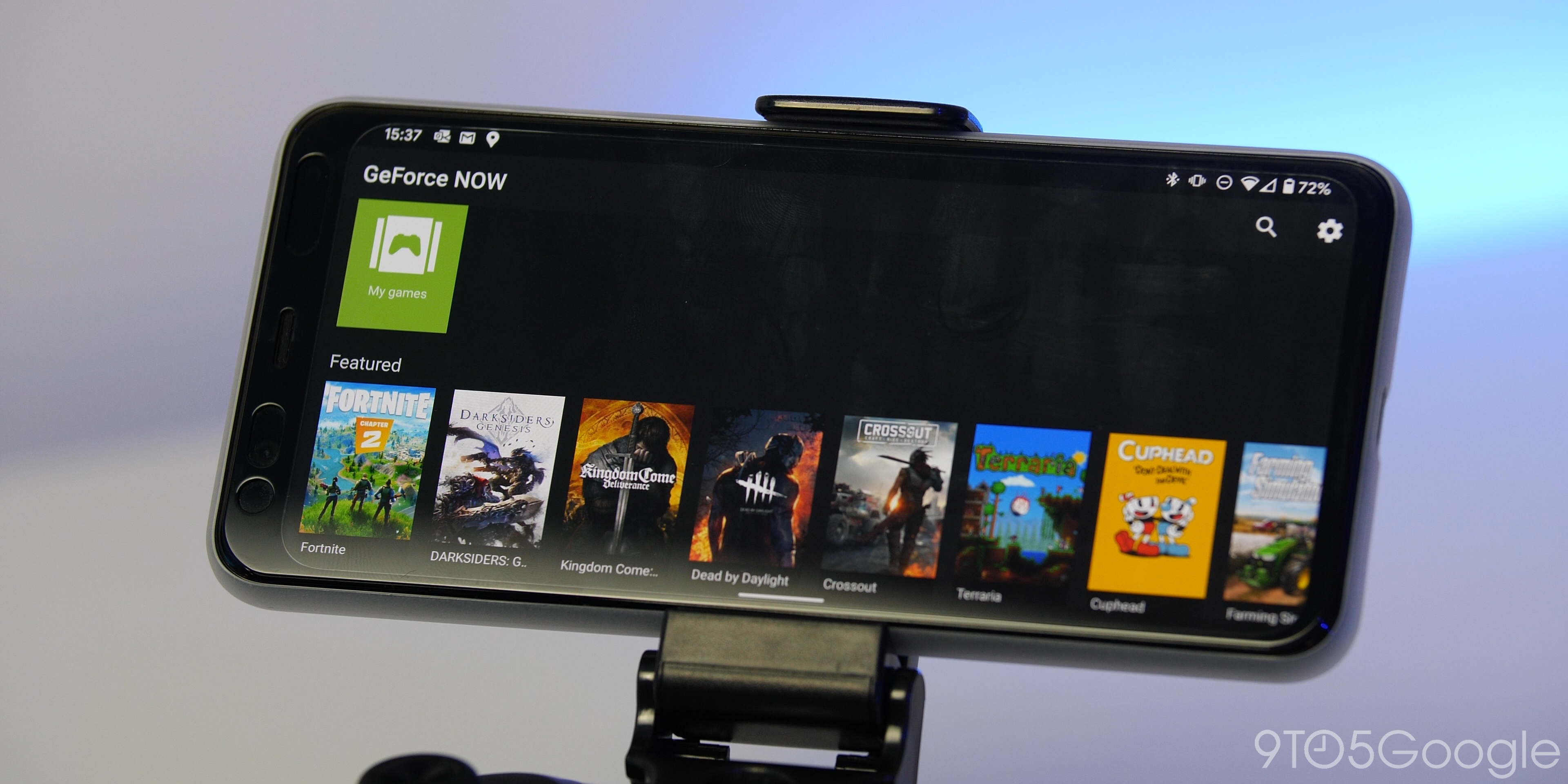
In either case, you’re paying monthly for access to cloud hardware to play (some/most of) the games you’ve bought elsewhere. For those who already have an extensive library of games, one of these services may make more sense than Stadia. Additionally, games get far more steeply discounted on Steam, especially during the seasonal “Steam sales.” To date, Stadia has offered some discounts, but never anything quite on the level of a Steam sale.
All of this to say: Stadia’s payment model may make sense for you compared to other services, or it might not. Thankfully, there’s absolutely nothing locking you into one game streaming service or another. In a world where the average household in the US has 3+ video streaming services, there might be room in your budget to have Stadia as well as Xbox Game Pass or Luna.
Value vs consoles
Of course, other streaming services are not Stadia’s only competitors, not by a long shot. Instead, Stadia is uniquely positioned to compete with the next generation of consoles from Microsoft and Sony. Right on schedule, gaming is progressing to the next hardware generation with the recent, successful launches of Sony’s PlayStation 5 and Microsoft’s Xbox Series X and Series S.
This puts gamers in an interesting position, as even the most affordable next-generation console, Xbox Series S, is a $299 outlay — made somewhat more palatable by Microsoft offering a payment plan. In a year when many have faced financial hardships, the idea of buying a new console simply to be prepared for the upcoming next generation of games may not make sense for some.
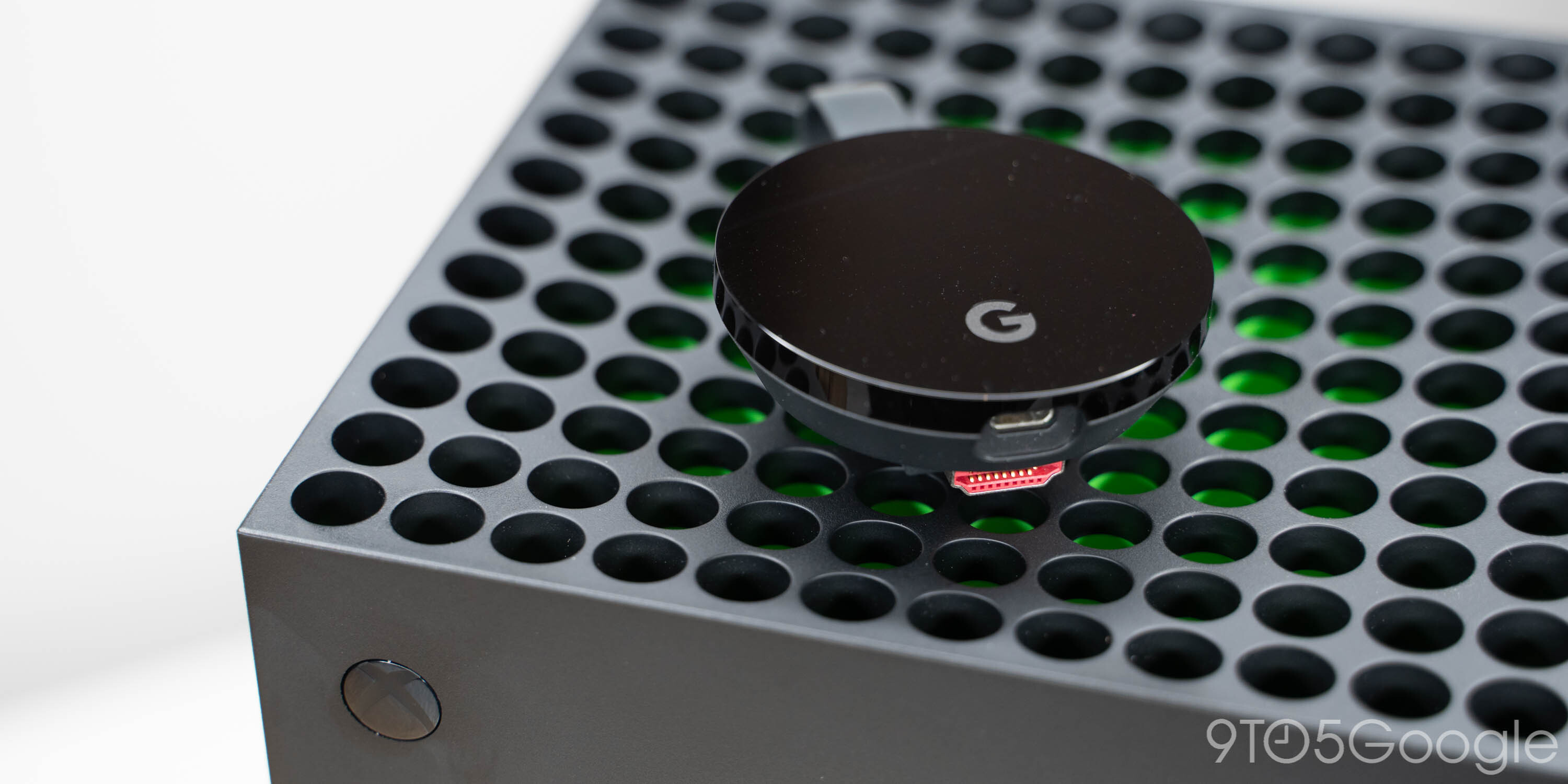
Meanwhile, Stadia is oddly both ahead of the curve and behind it. By being available for the past year, Stadia was the first “next-gen console” — in the loosest definition — to launch. However, performance-wise, Stadia as it exists today seems like it’s barely keeping up with the previous console generation.
As a service with a long future ahead of it, Google will undoubtedly give Stadia a hardware boost at some point, with rumors of “Gen 2” hardware already being in developers’ hands. Back at GDC 2019 when Stadia was first announced, Google even touted the possibility of using multiple GPUs in the cloud to enhance graphics as needed. One year in, however, neither of these seem like enhancements we’ll see in the near-term.
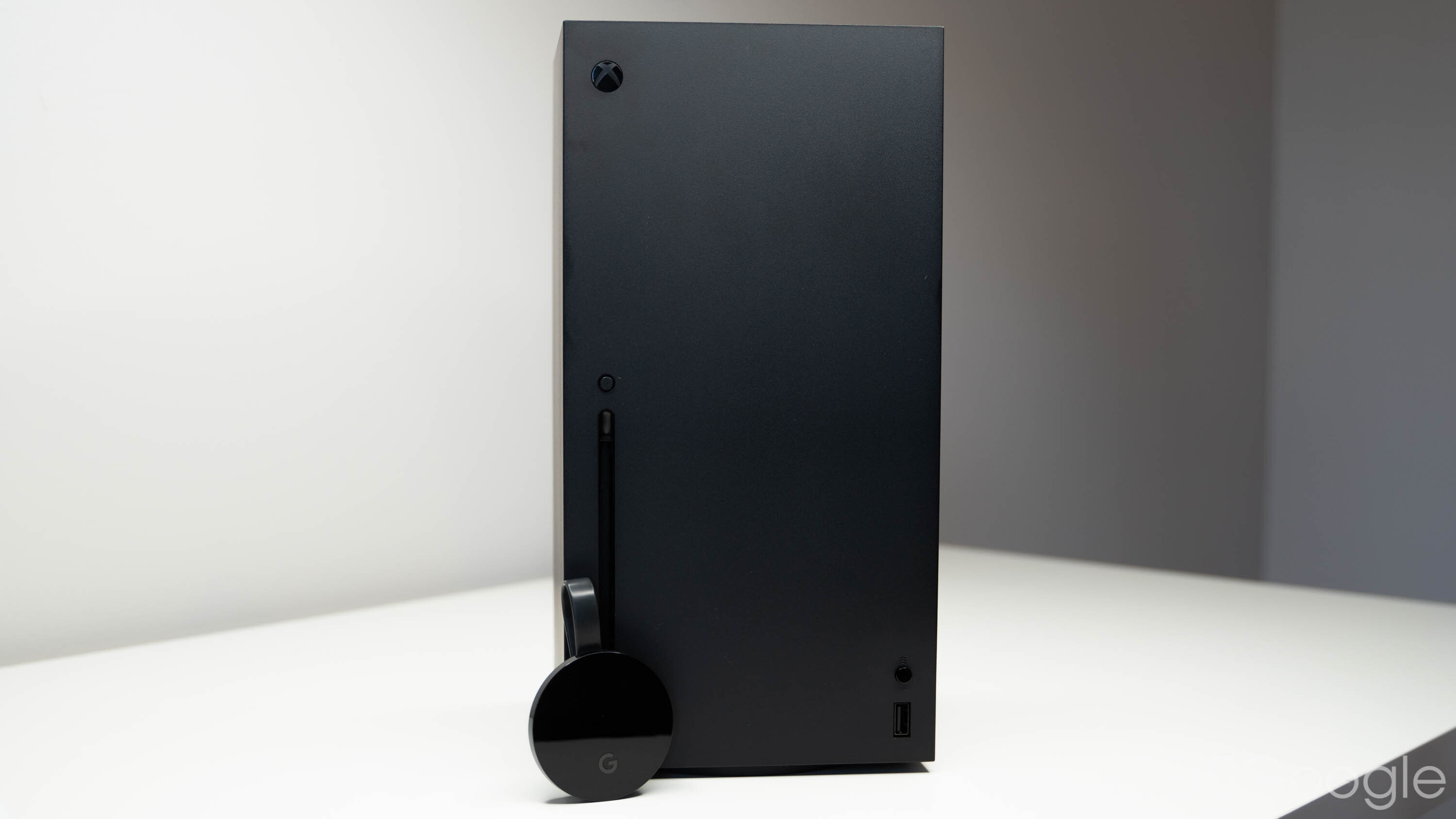
Focusing on what’s available today, Stadia does not yet compete with next-generation consoles. In fact, some next-gen titles such as NBA 2K21 limit Stadia to the “current-gen” version that exists on Xbox One and PS4. For the time being, Stadia in its performance, quality, experience, and game library is best compared with a PlayStation 4 Pro or Xbox One X. With that baseline, Stadia has the advantage of being essentially free — give or take the optional $69 Stadia Controller or $99 Stadia Premiere Edition bundle — with the purchase of any game, versus $370 for either 4K-enabled console pre-owned plus the cost of games.
Paying full price for games, $370 can easily net you six AAA titles and a month of Stadia Pro. Looking at the longer term, however, consoles — assuming you don’t buy a digital-only console — have the advantage of used games which, if you hold out long enough, typically end up significantly discounted.
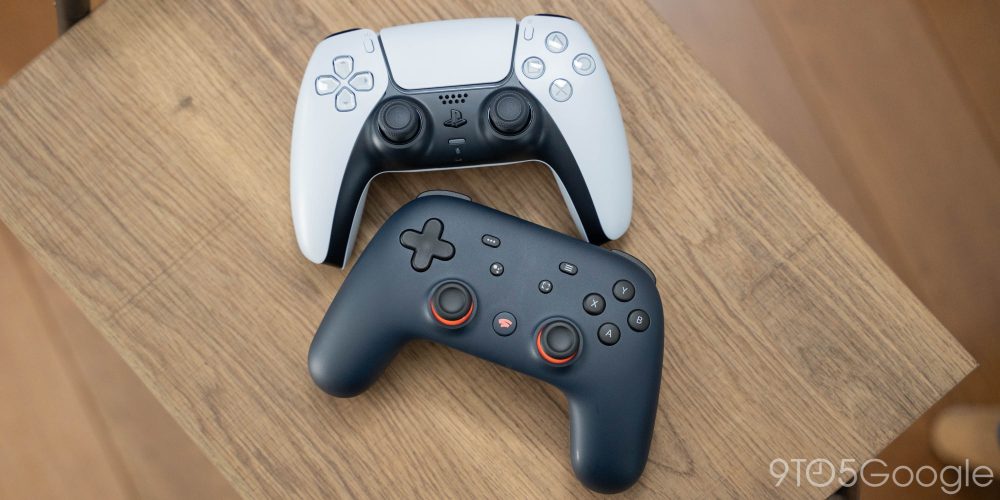
Another key factor of consoles is that both Xbox and PlayStation require you to maintain a $10/month subscription to have access to multiplayer features in most games. Stadia, for its part, also offers its $10/month Stadia Pro subscription, but it is not required for access to multiplayer games. Depending on the types of games you prefer to play, this can majorly tip the scales of value.
Essentially, if you already own a last-generation console (PlayStation 4 Pro or Xbox One X), there’s probably not a strong reason for you to commit to Stadia outside of the occasional exclusive or a game you simply want to play while on-the-go. If you’re considering whether or not to buy a console, Stadia may work out as the more affordable alternative, depending on how many games you intend to purchase and how you feel about used games.
Bonus: Stadia Controller
For the past year, I’ve been primarily using the original Stadia Controller that came with the Founder’s Edition kit. In that time, I’ve taken it with me when traveling — Remember when we could travel? — have put on and taken off the “Claw” mount repeatedly, and had the controller fall off of couches and coffee tables more often than I care to admit.
In all of that use, and at times abuse, the official Stadia Controller has held up surprisingly well, especially for Google’s first attempt at a first-party game controller. The buttons are still tight, and the triggers and sticks are still springy. The only real wear and tear has been scuffs and scrapes from, again, the abuse I’ve put my poor controller through.
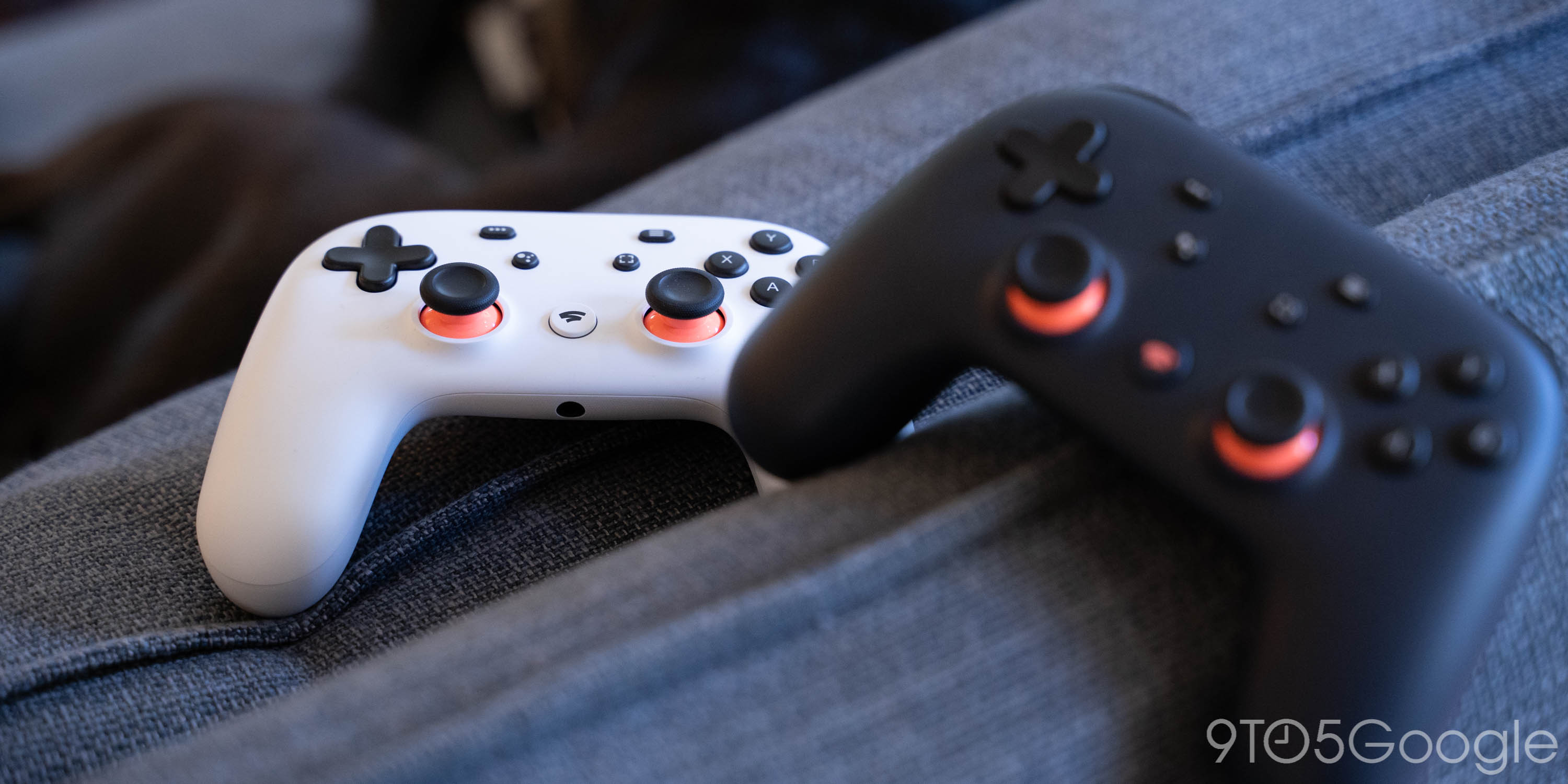
Genuinely, my biggest complaint about the Stadia Controller is that I wish it had a longer-lasting battery. Perhaps by comparison to the PlayStation 4’s DualShock 4 controller, the battery life is fine, but I personally believe Nintendo’s Switch Pro Controller sets the bar for what battery life could and should be. Thankfully, the Stadia Controller can be charged with most USB-C chargers, which are becoming increasingly common in the home.
Another interesting flaw is in the visual design language. Specifically, the two menu buttons (above the Assistant and Capture buttons) do not have well-known or easily conveyed names. Without looking at the controller, I honestly couldn’t say with certainty whether the three-lines button or three-dots button is the one on the right-hand side, and to this day I do not know what the official name is for either button.
Issues aside, the Stadia Controller has wormed its way into my heart as one of my all-time favorite controllers, and certainly my outright favorite from an ergonomics/comfort standpoint, though this may vary from person to person.
TL;DR
Putting it all together, there’s no denying that Stadia, today, is a flawed platform.
To play on Stadia in its current state is to accept compromise. Stadia doesn’t have graphics as good as the latest consoles. Stadia oddly still doesn’t have all of the features of other gaming platforms. Stadia doesn’t get all of the latest game releases — especially not on their formal release date — and has almost no compelling exclusives. Stadia also barely even has enough players to play with for the games it has.
However, I wholeheartedly believe that the bones of Stadia — in my opinion, the best performing game streaming currently available, and a genuine glimpse into the future — are solid and that something great can be built from them. If Google is willing and able to put in the necessary efforts and investments, Stadia’s flaws can become mere bumps in the road to long-term success.
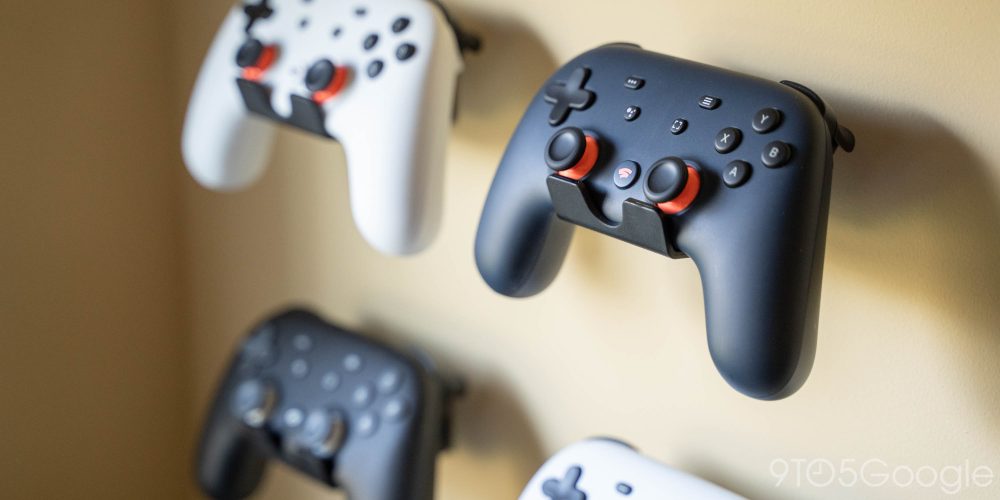
Back in 2019, our Ben Schoon opined, wisely, that Stadia wouldn’t matter for a year. No one could have predicted at the time exactly what kind of year 2020 was going to be for people and companies alike. I think if we can “forgive” Stadia of its rough edges for another year, while still holding Google’s feet to the flame to get things done, Stadia has the potential to become a real competitor to the likes of Xbox and PlayStation.
Until then, Stadia’s compromises can be viewed as the cost of accessibility. Part of what made the original Nintendo Switch so great and revolutionary was its ability to be both a handheld and a home console at a moment’s notice, which came at the cost of performance. In some ways, Stadia massively expands that portability, putting true AAA games on almost any screen, with the caveat of needing a good enough internet connection.
This accessibility, specifically the ability to play games on every screen in my home, will ensure that Stadia will remain my preferred gaming platform for the foreseeable future, warts and all.
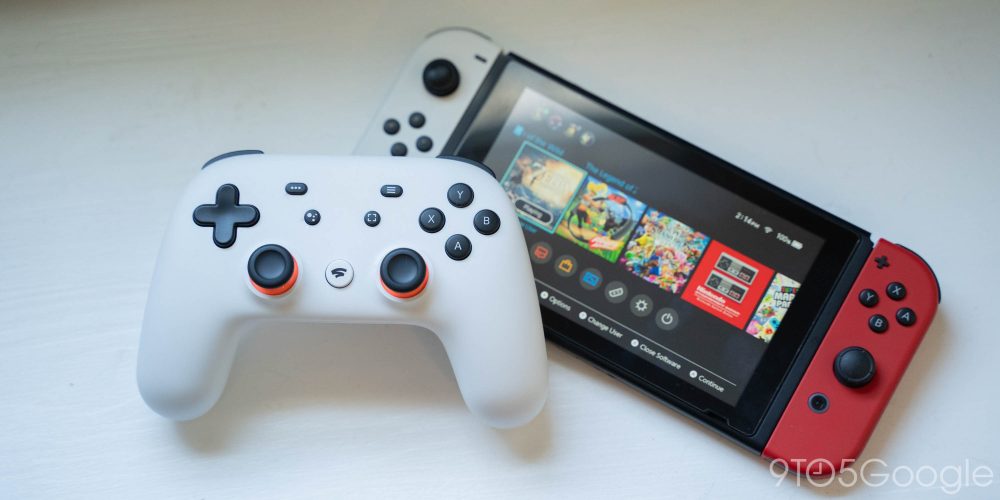
Author: Kyle Bradshaw
Source: 9TO5Google



